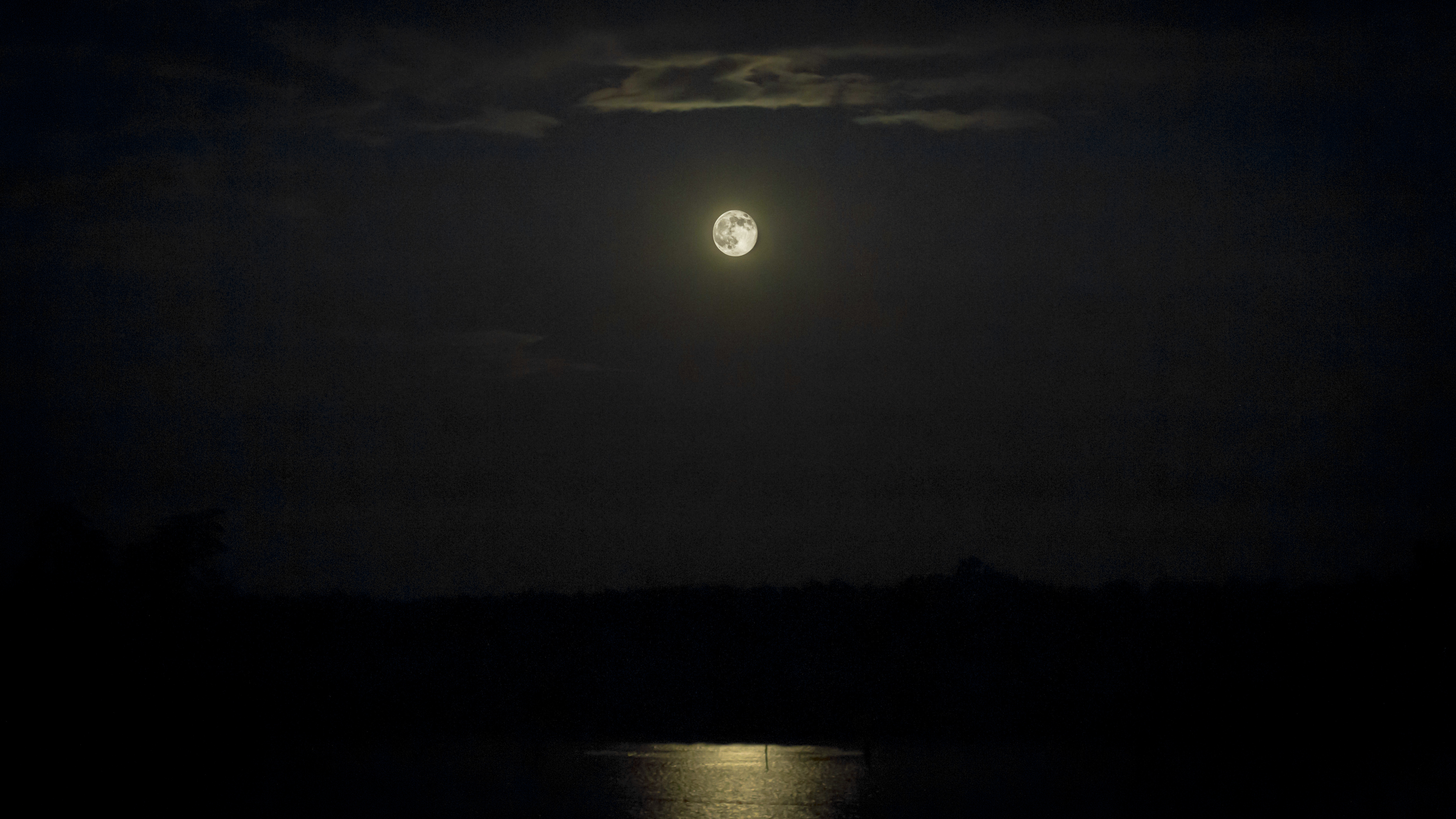Stupendous Supermoon Views Wow Stargazers (Photos)

When the spectacular supermoon emerged on Saturday (July 12), so did shutterbugs around the world.
July's full moon peaked just after the "perigee," or the point when the moon is closest to Earth in its elliptical orbit. To the delight of night sky photographers, the result was an amazing "supermoon" that appeared much brighter and closer than a typical full moon.
One skywatcher, Greg Hogan, dragged his camera (and his entire family) to Flat Creek Park in Perry, Georgia, so that he could snap photos of the extra large moon and its light reflecting off the water. [See More Photos of the July Supermoon]
"My whole family joined me on my supermoon chase," Hogan told Space.com in an email, adding that his three young sons stayed up well past their bedtime to see the lunar display. "Such a beautiful sight, and even more awesome to witness it with family. The kids loved it, we all loved it."
Hogan wasn't alone in his wonder. The big and bright-shining supermoon — the first of three this summer — amazed skywatchers from Maine, Manhattan, Macedonia, Australia, Puerto Rico and Los Angeles, who sent in photos to Space.com.
Even NASA photographers took time to take in the amazing lunar view from Wallops Island, Virginia, while covering the weekend launch of a commercial Antares rocket built by the aerospace company Orbital Sciences Corporation. Photographers Bill Ingalls and Aubrey Gemignani snapped photos of the supermoon shining big and bright over the Antares rocket, which stood ready for its July 13 launch from NASA's Wallops Flight Facility. That Sunday launch of the Antares rocket went off without a hitch.
For example, in Entiat, a town in central Washington, night sky photographer Tim McCord watched the full moon bulging over a hillside and captured the silhouette of a charred tree.
Breaking space news, the latest updates on rocket launches, skywatching events and more!
"We are having major fires over here so it was real smoky," McCord told Space.com in an email.
The distance between the Earth and moon is, on average, about 238,855 miles (384,400 kilometers). But at perigee, the moon creeps about 31,000 miles (50,000 km) closer to Earth than at the highest point of its orbit, called "apogee."
Thanks to an orbital coincidence, skywatchers will be treated to two more supermoons this summer, during both the full moons on Aug. 10 and Sept. 9.
Editor's note: If you snap an amazing lunar photo of the "supermoon" full moon in August and September and would like to share it with Space.com for a gallery or story, you can send images and comment in to managing editor Tariq Malik at: spacephotos@space.com.
Follow Megan Gannon on Twitter and Google+. Follow us @SPACEdotcom, Facebook or Google+. Originally published on Space.com.
Join our Space Forums to keep talking space on the latest missions, night sky and more! And if you have a news tip, correction or comment, let us know at: community@space.com.

Megan has been writing for Live Science and Space.com since 2012. Her interests range from archaeology to space exploration, and she has a bachelor's degree in English and art history from New York University. Megan spent two years as a reporter on the national desk at NewsCore. She has watched dinosaur auctions, witnessed rocket launches, licked ancient pottery sherds in Cyprus and flown in zero gravity on a Zero Gravity Corp. to follow students sparking weightless fires for science. Follow her on Twitter for her latest project.


